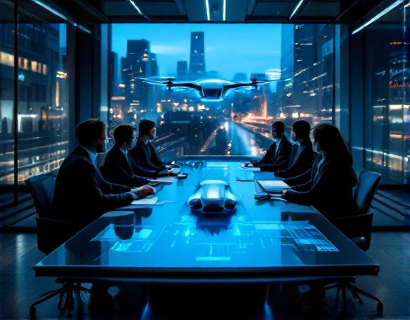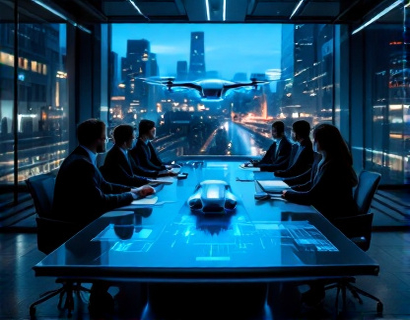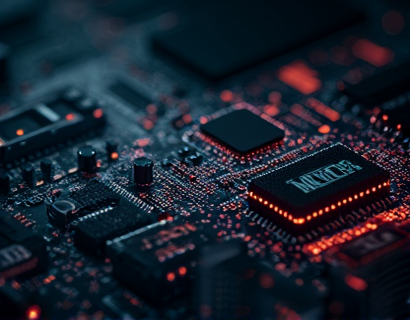AI-Powered Agent Revolutionizes Aeronautics: Streamlining Operations and Enhancing Decision-Making for Industry Professionals
The aeronautics industry, a cornerstone of global transportation and commerce, is undergoing a significant transformation driven by the integration of artificial intelligence (AI). This revolution is not just about automating routine tasks but about fundamentally changing how operations are managed and decisions are made. AI-powered agents are at the forefront of this change, offering unprecedented opportunities for streamlining operations and enhancing decision-making processes. For professionals and businesses in the aeronautics sector, embracing these technologies is not just an option but a necessity to stay competitive and sustainable in a rapidly evolving market.
Understanding the Role of AI in Aeronautics
AI in aeronautics encompasses a wide range of applications, from predictive maintenance and flight optimization to supply chain management and customer service. The core advantage of AI lies in its ability to process vast amounts of data quickly and accurately, providing insights that are both timely and actionable. For instance, AI algorithms can analyze historical flight data to predict potential mechanical failures before they occur, reducing downtime and maintenance costs. Similarly, AI can optimize flight paths in real-time, considering factors like weather conditions, air traffic, and fuel efficiency, leading to significant savings and improved safety.
Streamlining Operations with AI
One of the most impactful areas where AI is making a difference is in operational streamlining. Traditional aeronautics operations often involve manual processes that are time-consuming and prone to errors. AI-powered agents can automate these processes, from scheduling and logistics to inventory management. For example, AI can optimize flight schedules by analyzing multiple variables such as passenger demand, crew availability, and aircraft maintenance needs. This not only reduces operational costs but also enhances the overall customer experience by ensuring more reliable and efficient service.
Moreover, AI can integrate various systems and data sources, creating a unified view of operations. This integration allows for real-time monitoring and adjustments, which is crucial in an industry where delays can have cascading effects. By centralizing data and automating workflows, AI helps organizations reduce manual intervention, minimize human error, and increase throughput. This level of efficiency is particularly valuable in high-stakes environments like air traffic control, where precision and speed are paramount.
Enhancing Decision-Making with AI
Decision-making in the aeronautics industry is complex and multifaceted, involving a wide range of stakeholders and data sources. AI agents can significantly enhance this process by providing data-driven insights and predictive analytics. For instance, AI can analyze market trends, customer behavior, and operational data to forecast demand and optimize resource allocation. This proactive approach enables businesses to make informed decisions that align with their strategic goals and market conditions.
Another critical area is risk management. AI can identify potential risks and vulnerabilities in operations, supply chains, and security systems. By simulating various scenarios and evaluating outcomes, AI helps organizations prepare for and mitigate potential issues. This proactive risk management is essential in an industry where safety and reliability are non-negotiable.
Case Studies and Real-World Applications
Several aeronautics companies have already begun to leverage AI to transform their operations. One notable example is a major airline that implemented an AI-powered predictive maintenance system. This system analyzes data from sensors on aircraft engines and other critical components to predict when maintenance is needed. As a result, the airline has seen a 20% reduction in unscheduled maintenance events and a 15% decrease in maintenance costs. These improvements not only save money but also enhance the reliability and safety of their fleet.
Another case involves a leading aircraft manufacturer that uses AI to optimize its supply chain. By analyzing data from suppliers, manufacturing processes, and distribution networks, AI helps the company identify bottlenecks and inefficiencies. This has led to a 10% reduction in lead times and a 5% reduction in inventory costs. The manufacturer has also reported improved collaboration with suppliers, as AI facilitates better communication and transparency throughout the supply chain.
Challenges and Considerations
While the benefits of AI in aeronautics are clear, there are also challenges and considerations that organizations must address. One of the primary concerns is data quality and availability. AI systems rely on high-quality, relevant data to produce accurate insights. Ensuring data integrity and consistency is crucial for the success of AI initiatives. Additionally, the aeronautics industry operates in a highly regulated environment, and AI solutions must comply with stringent safety and security standards. This requires close collaboration between AI developers and industry regulators to ensure that technologies meet all necessary requirements.
Another challenge is the need for skilled professionals who can implement and manage AI systems effectively. The aeronautics industry must invest in training and development to build a workforce capable of leveraging these advanced technologies. Organizations should also consider the cultural shift required to embrace AI, fostering a mindset that values data-driven decision-making and continuous improvement.
Future Trends and Opportunities
The integration of AI in aeronautics is just beginning, and the future holds numerous exciting possibilities. One emerging trend is the use of AI in autonomous systems, including drones and unmanned aerial vehicles (UAVs). These technologies have the potential to revolutionize areas such as cargo transport, surveillance, and environmental monitoring. AI can enhance the autonomy and efficiency of these systems, making them more viable for commercial and industrial applications.
Another area of growth is the development of AI-driven digital twins. Digital twins are virtual replicas of physical systems that can simulate and predict real-world behavior. In aeronautics, digital twins can be used to model aircraft, engines, and even entire fleets, allowing for detailed analysis and optimization. This technology can significantly reduce development costs and time, as well as improve the performance and reliability of aeronautical systems.
Furthermore, the convergence of AI with other emerging technologies like the Internet of Things (IoT) and 5G connectivity will create new opportunities for innovation. IoT devices can generate vast amounts of data that AI can process in real-time, enabling more dynamic and responsive operations. 5G connectivity will facilitate faster data transmission and lower latency, making AI applications more effective and reliable.
Conclusion
The integration of AI-powered agents in the aeronautics industry represents a transformative shift that can lead to significant improvements in efficiency, decision-making, and overall performance. By automating routine tasks, providing data-driven insights, and enhancing operational coordination, AI offers a competitive edge in a market that demands innovation and sustainability. For aeronautics professionals and businesses, embracing these technologies is not just a strategic advantage but a necessity for long-term success. As the industry continues to evolve, those who adapt and innovate with AI will be best positioned to thrive in the future.










































